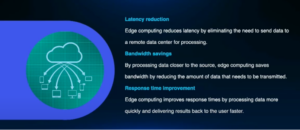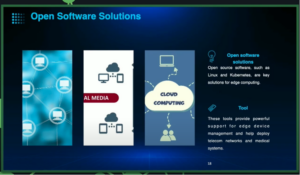Towards a New Era of Edge Computing — Open Software on Open Hardware
Why is embracing the relationship between open software and hardware so important? In a presentation delivered at ONE Summit 2024, Tina Tsou (Infra Ecosystem Director, Arm & LF Edge) and Tiejun Chen (Technical Lead, VMware) define edge computing as a “critical paradigm in revolutionizing how data is processed and managed.”
Tsou and Chen explored groundbreaking achievements in edge computing, focused on the synergy between open source software and hardware.
The Importance of Edge Computing:

→ Enhanced Connectivity and Reduced Latency
Edge computing fundamentally shifts data processing closer to the data source. This proximity reduces latency and ensures real-time data analysis and faster response times. Applications like IoT, autonomous vehicles, and smart cities heavily rely on this speed and efficiency.
→ More Security
By processing data locally instead of transferring it to centralized data centers, edge computing reduces security risks tied to data transit. This is crucial for sectors handling sensitive data, like healthcare and finance.
→ Openness
Open source software and hardware are at the heart of edge computing innovation. Linux, Raspberry Pi, and Arduino (to name just a few) offer the flexibility and scalability required to develop and deploy edge solutions rapidly.

→ Collaboration
Open source ideologies and practices encourage continuous improvement and adaptation. Developers and corporate partners alike can contribute to and benefit from shared advancements.
On the Horizon
Open source tools are already addressing traditional constraints in edge computing, like bandwidth optimization and network congestion reduction. By processing data locally, edge computing conserves bandwidth and enhances overall responsiveness.
Coupled with the astronomical benefits are challenges like security vulnerabilities and the lack of standardization. Promising solutions include leveraging transparent backend graph compilers and deploying tailored AI models at the edge.

The transformative potential of open software and hardware marks the journey into the new era of edge computing.
Watch the entire presentation on LFN’s YouTube channel to learn more.